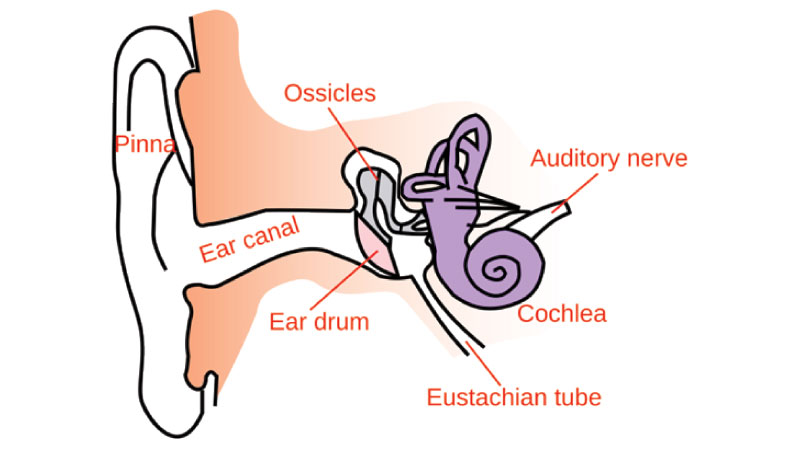Have you ever wondered how you can hear the sounds around you, like your favourite song, the sound of a car driving by, or someone calling your name? Well, it’s all thanks to your ears. Our ears are pretty amazing and help us understand the world in a whole new way. Let’s take a journey through how your ears work.
Fun fact
Ears don’t just help you hear
Did you know that your ears also help you balance? Inside your inner ear, there are special parts that help you stay steady and know which way you’re moving. This is why you don’t fall over when you walk or spin around.
The three parts of your ear
Your ear is made up of three important parts: the outer ear, the middle ear, and the inner ear.
Each part has its own special job.
* Outer Ear – The sound catcher
The outer part of your ear is the part you can see—the ear or pinna. It works like a funnel, catching sounds from all around you. When someone talks or dog barks, the sound waves (which are like invisible vibrations in the air) enter your outer ear and travel down a small tube called the ear canal.
*Middle ear – The vibration maker
Once the sound waves reach the end of your ear canal, they hit the eardrum. The eardrum is a thin piece of skin that vibrates when it feels the sound waves. Imagine tapping your finger on a drum—those vibrations travel through the air. The eardrum works the same way. The vibrations from the eardrum travel to tiny bones in your middle ear called the ossicles. These three bones—the hammer, anvil and stirrup—are the smallest bones in your body. They help send the vibrations to the next part of your ear.
* Inner ear – The sound interpreter
Now, the vibrations reach the inner ear, where the magic happens! Inside the inner ear is a spiral-shaped organ called the cochlea, which is filled with fluid. The cochlea has thousands of tiny hair cells that move when the sound vibrations make the fluid inside it wiggle. These hair cells send signals to your auditory nerve, which is like a super-fast highway that carries the information straight to your brain.
When the brain gets the signals from your ears, it turns them into sound—so you can hear your friend’s voice, your favourite music, or the sound of a bird singing.
Protecting your ears
Since our ears are so important, it’s good to protect them. Here are some tips to keep your ears healthy
* Avoid loud noises, like blasting music or fireworks, because they can hurt your ears.
*Don’t stick things like cotton swabs into your ears—this can damage them.
*If you’re ever around loud sounds, like at a concert, wear ear protection to keep your hearing safe.
Now you know how our ears work. They are like tiny, super-smart instruments that help us hear the world around us and even help us keep our balance. So the next time you hear something, remember how hard your ears are working to let you enjoy every sound.




